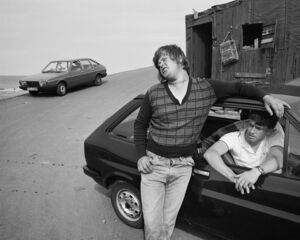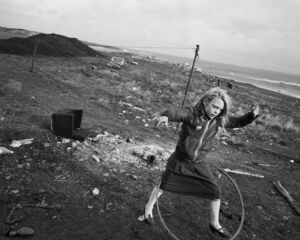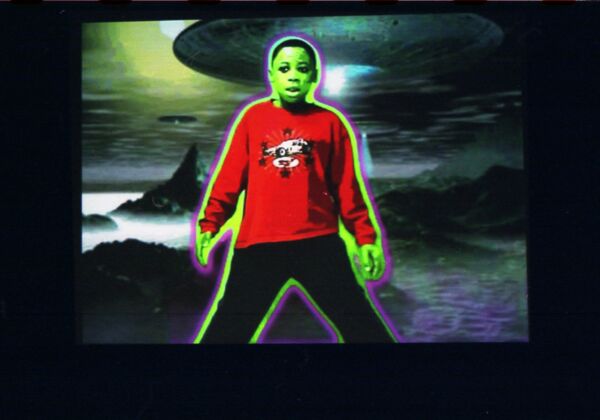Chris Killip, retrospective
13 Mar 2023
Baltic Centre for Contemporary Art, Gateshead is pleased to present a full-career retrospective of work by one of the UK’s most important and influential post-war documentary photographers, Chris Killip (1946-2020).

Located in Baltic’s Ground Floor gallery, the retrospective exhibition of more than 150 works serves as the most comprehensive survey of the photographer's work to date and includes previously unseen ephemera and colour works. The exhibition, running 1 April – 3 September 2023, is curated by Ken Grant and Tracy Marshall and produced in collaboration with The Photographers’ Gallery, London.
Grounded in his sustained immersion into the communities he photographed, Chris Killip's photographs of those affected by economic shifts throughout the 1970s and 80s in the North of England remain without parallel. Whilst marking a moment of deindustrialisation, Killip's stark yet tender observation moves beyond the urgency to record such circumstances, to affirm the value of lives he grew close to - lives that, as he once described 'had history done to them', who felt history's malicious disregard and yet, like the photographer himself, refused to yield or look away.
From early work made in his native Isle of Man, through overlapping series’ made over two decades in the North of England, Killip's approach to portraying communities is explored. Against a background of shipbuilding and coal mining, he witnessed the togetherness of communities and the industries that sustained them and stayed long enough to see their loss. At Lynemouth, for his series ‘Seacoal’, he photographed men on horse-driven carts reclaiming coal which had been discarded into the sea by a nearby mine, and at Skinningrove he documented a group of young men, their friendships and labours as they waited for the tide to turn.
The exhibition, curated by Tracy Marshall-Grant and Ken Grant, also draws upon less familiar work by a photographer whose life and career has proved so influential in shaping British photography. Killip's dedicated recording of the miners' strike of 1984-5 and his engagement with shipbuilding a decade earlier, remain lesser known yet pivotal works that betrayed not only a changing economy, but the concerns of a photographer moved to witness them. In dialogue with the prints made by the photographer towards the end of his life, the exhibition also considers Killip's photo books, drawing on early maquettes to map the development of books acknowledged as landmark.
The exhibition is accompanied by a major monograph co-published with Thames and Hudson, edited by Ken Grant and Tracy Marshall- Grant and designed by Niall Sweeney. The book includes a foreword by Brett Rogers, in depth essay , in depth essays by Ken Grant and texts by Amanda Maddox, Greg Halpern and Lynsey Hanley.
Press Contacts
Fiona Russell, fiona@suttoncomms.com
Craig Astley, craiga@baltic.art
Chris Killip
Born in Douglas, Isle of Man in 1946, Chris Killip left school at age sixteen and joined the only four star hotel on the Isle of Man as a trainee hotel manager. In June 1964 he decided to pursue photography full time. He worked as a freelance assistant for various photographers in London from 1966-69. In 1969, after seeing his very first exhibition of photography at the Museum of Modern Art in New York, he decided to return to photograph in the Isle of Man. In 1972 he received a commission from The Arts Council of Great Britain to photograph Huddersfield and Bury St Edmunds for the exhibition ‘Two Views — Two Cities’. In 1975, he moved to live in Newcastle-upon-Tyne on a two year fellowship as the Northern Arts Photography Fellow.
He was a founding member, exhibition curator and advisor of Side Gallery, Newcastle-upon-Tyne, as well as its director, from 1977-79. In 1989 he received the Henri Cartier Bresson Award and in 1991 was invited to be a Visiting Lecturer at the Department of Visual and Environmental Studies, Harvard University. In 1994 he was made a tenured professor and was department chair from 1994-98. He retired from Harvard in December 2017 and died in 2020. His work is featured in the permanent collections of major institutions such as the Museum of Modern Art, New York; George Eastman House; Fine Arts Museum of San Francisco; Museum Folkwang, Essen; the Stedelijk Muse






